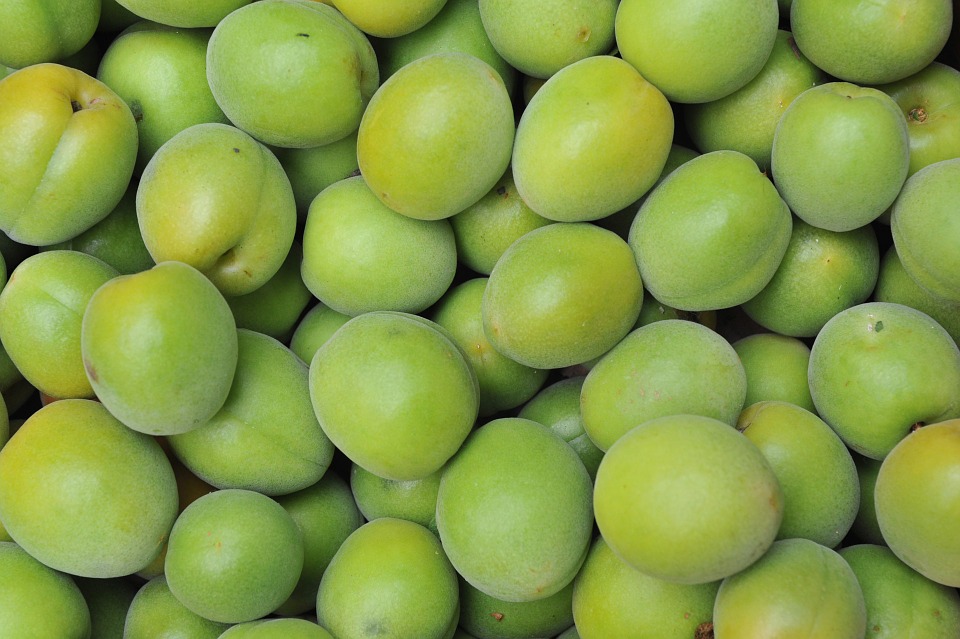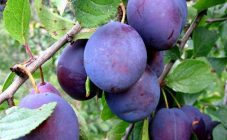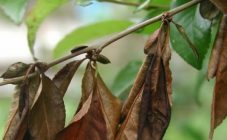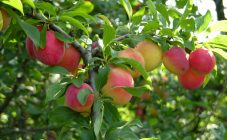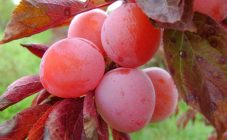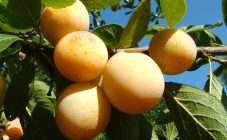Content:
Almost every gardener has come across a situation where the abundant flowering of plums pleases the eye, gives hope for a good harvest, but in the process of development, most of the plums fall off. This phenomenon can occur in several stages:
- Sprinkling plum color;
- Fall of the ovary;
- Falling green small fruits;
- Falling off almost ripe plums.
In order to preserve the future harvest, it is necessary to find out why the plum sheds green fruits.
Contrary to fears, the most common reason why plums fall off are natural factors. Abundant flowering, the formation of a large number of ovaries - the plum cannot ensure the correct development of all the fruits that they were able to set. As a result, it gets rid of weak, undeveloped (at first glance, difficult to distinguish) ovaries. This is a natural physiological process aimed at obtaining a quality product.
But often there are other reasons why plums fall off the fruits - they are no longer so harmless. To prevent crop loss or preserve fruit that has already formed, factors that can cause plums to fall should be investigated.
Why does the ovary fall off the plum
If there is an abundant drop in color, and then ovaries, then there may be several reasons:
- Spring frosts - one of the main preconditions why, not having time to tie, the plum's color falls off. Lowering the temperature to -2 degrees can damage a significant part of the color. Frozen flowers in this case become brown in color, sometimes with a black center.
- Poor pollination Is another possible option, in which a significant part of the color, which has already begun to be tied, may fall off. Experienced gardeners know that every tree has its own pollinator. The more plums of different varieties grow side by side, the greater the likelihood of good quality cross-pollination.
- Nitrogen deficiency - a fairly common reason why the plum is still green. The very first sign is that the leaves begin to turn yellow, the shoots grow poorly, the fruits are not uniform, greenish unsaturated color. To solve this problem, you should feed the tree with nitrogen-containing agents (ammonium nitrate) at the beginning of summer.
- Weather - hail, strong wind, heavy rains.
Why do plums fall off fruits
Excessive shedding of almost or well-ripened fruits is often observed. In such cases, it is urgently necessary to determine and eliminate the cause of shedding in order to make it possible to ripen or have time to collect the fruit. These factors are worth exploring in more detail:
- Tree age... The optimum age for fruiting plums is 5-8 years. If the tree is young or, conversely, too old, it may simply not have the strength to provide the fruits with the necessary substances.
- Dense, untreated crown... Plum, like all fruitful trees, requires regular crown maintenance.In order for the tree not to waste energy on the growth of unnecessary branches, you should clean the plum from sick, dry pagons, thin out too dense areas. Sections need to be treated with garden pitch. It is worth remembering that the plant does not tolerate deep cleaning well, it is sick for a long time, spends a lot of energy on recovery.
- Poorly chosen landing site... Although this plant is undemanding in matters of soil, in rare cases it does not tolerate shaded areas prone to blocking. In this case, you should think about drainage.
- Lack of moisture. In hot summer conditions, plum is very sensitive to drought. Lack of nutrients, especially at the time of fruit ripening, affects the yield. In order to water the tree, it is enough to water it abundantly 2-3 times per season. For better water penetration to the roots, you can dig a shallow groove around the plum and pour several buckets of warm water into it.
More serious factors affecting the quality of the crop are:
- Lack of recharge;
- Pests;
- Diseases.
These causes and methods of their elimination are worth studying more carefully.
Feeding plums
What if the plum throws off unripe fruits? The tree should be helped to provide the fruit with nutrients. To do this, it is worth carrying out regular feeding and fertilizing.
In spring and autumn, organic fertilizers should be applied: manure, chicken manure solution, ash. If there is no organic matter, inorganic complex fertilizers can be used.
You need to feed the tree three times per season:
- 2-3 tablespoons of urea and potassium sulfate are diluted in 10 liters of water. On average, you need 30 liters of water per drain. Carried out before flowering;
- 2-3 tablespoons of urea and nitrophoska are diluted in 10 liters of water, you need 20 liters per tree. It is carried out during the ripening of the fruit.
- 2-3 tablespoons of potassium sulfate and superphosphate are diluted in 10 liters of water. About 30 liters of water is poured under the tree. This dressing is carried out in the fall, after the harvest. During this period, the bones of the future harvest are being formed.
Diseases affecting plums
Leaves turn yellow, branches dry, plum drops fruits - what to do? It is good to see the tree - it may be affected by a disease:
- Fungal diseases:
- Polystygmosis (red spot);
- Moniliosis (fruit, gray rot);
- Coccomycosis.
- Bacterial diseases:
- Bacterial spotting.
- Viral diseases:
- Chlorotic spotting;
- Sharka.
- Non-communicable diseases:
- Hommoz;
- Shrinking.
It is very disappointing, but all these diseases are practically not cured. As a preventive measure, you should carefully monitor the condition of the tree, cut and clean the crown in time, remove the fallen leaves. In the spring, until the buds open, it can be treated with a solution of Bordeaux liquid - 3%. Later, the procedure can be repeated using a 1% solution.
Pest control
What to do if the fruits of a plum fall as a result of insect damage?
The plum tree and the fruits themselves are most often damaged by these types of pests:
- Plum moth. The first sign of the presence of the moth is the ripening of the fruit ahead of time, the appearance of gum. First, the pest feeds on the pulp, after a couple of days it gets to the stalk, and the fruit disappears.
- Plum thickened... The danger of the thickened leg is in its invisibility. Outwardly it resembles an ordinary fly, settles in a bone and eats it calmly. As a result, a green plum with a damaged core crumbles.
- Plum sawfly... The larva of this pest damages both the bone and the pulp. At the same time, the fruit spreads an unpleasant smell.
To date, there are a considerable number of funds that can destroy pests that threaten the harvest. You just need to identify the threat in time.
In the fight against insects, contact insecticides have proven themselves well: Decis, Iskra, Arriva. They are used before flowering.
Later, the plant is treated with systemic pesticides such as Aktara, Calypso, Confidor-maxi.
Plum, like many fruit trees, often sheds its fruit. In most cases, this is a completely natural process that helps to get a better crop. But there are other reasons for the fall of the ovary and fruit, as a result of their action, you can lose most of the product. To avoid this, you should carefully monitor the condition of the tree and provide it with assistance in time.
